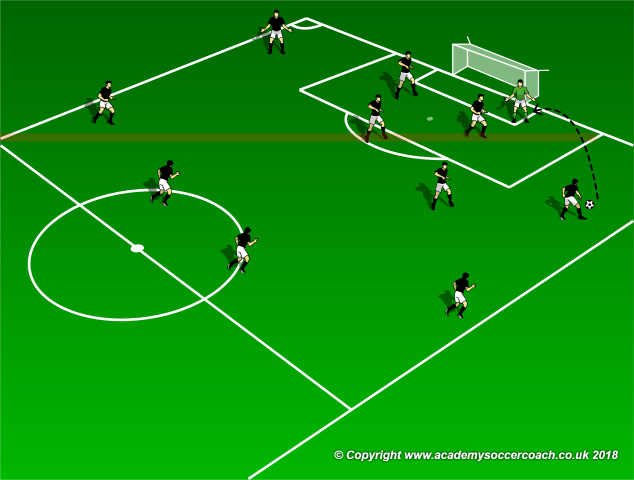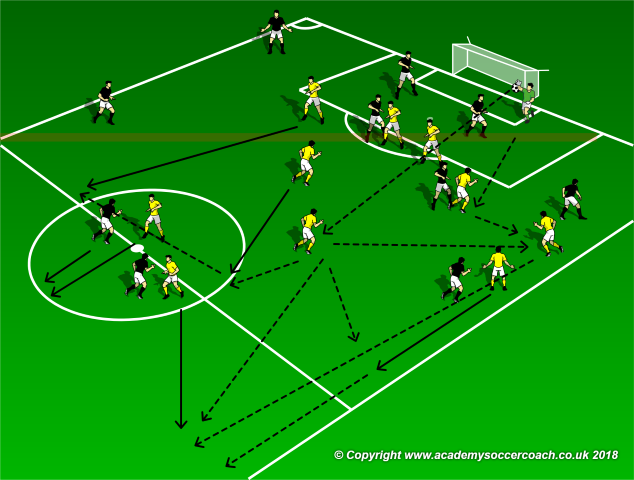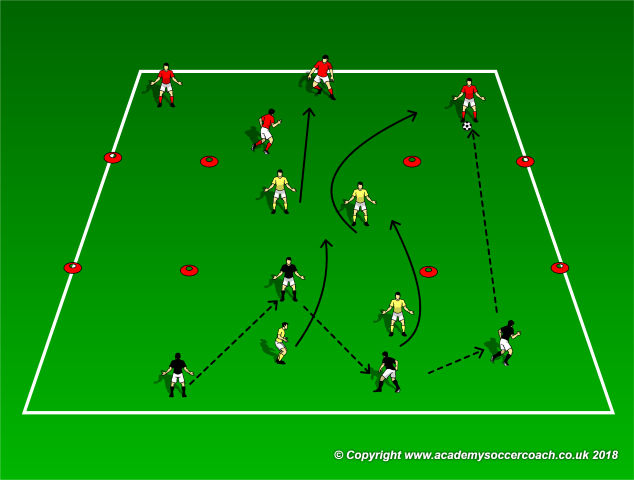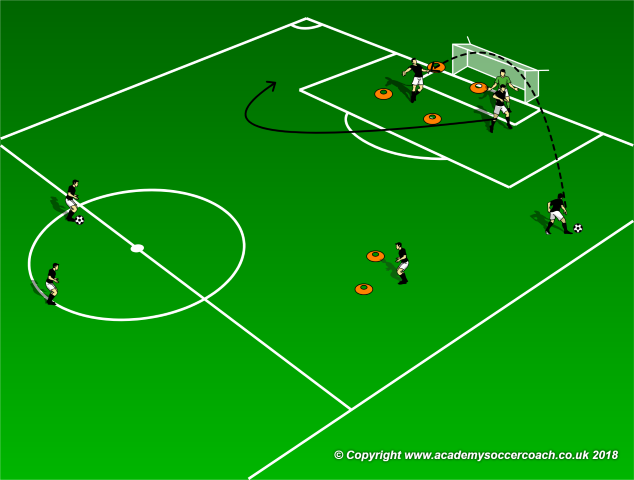By Mike Smith
One of the biggest strengths or weaknesses of any system comes down to how the style of play matches the system of play. At the high school level especially, I see so many teams who have excellent shape and formation but it just doesn’t match what they are trying to accomplish with the ball. For example, most teams readily try to make the field very wide when they gain possession. This width is designed to create space and gaps for a more central related attack say with early through balls. However, many of these same teams will forego the early through ball and play wide to the corner for services – which is fine – as long as the ball gets all the way across the goal. It sounds simple enough but the ball not getting all the way across can be a big detractor, can limit scoring chances and can expose a teams width to a quick counter attack if the keeper wins the cross clean on the near post. Check this out:

Above is a usual set up from a team who loves it’s attacking width. However, note the dull red diagonal line. IF the ball doesn’t get across or go out of bounds, there is a counter attack waiting and the 5 attacking players on or past the line will be out of the play:

I could put lines on the diagram all day, the fact is, if the ball doesn’t get across it is trouble. This is something teams who like to hit crosses really need to stress as many times, and I include my teams in this, the goals we allow were close to being goals for us about 10 seconds prior. Try this drill to re affirm the need for crosses to go across with your team:
Set Up
3 attackers start near half field as shown below. Two attackers start on the center circle and will attack goal after setting up a serving player, who is waiting on the cones as pictured. Half the goal is marked on the far post with cones, the keeper must play in front of this box. This is the target for the service. The player who starts at the far point of the circle at the half line sends a ball to the serving player on the cone, then makes a near post run to shield off and distract the keeper from playing the ball clean. The serving player first drops the ball off to the attacker coming from the top of the circle to the center spot ( as shown ) then bends a run to receive the pass out for the service – which must go through the cone box on the far post. The attacker who sets up the wide pass then sprints to attempt a finish in the cone box. ( second diagram) Once the service is past, the near post attacker bends out to support the attack at the far post should the service go over. IF the near post runner can get to any service which get across before they go out of bounds, they may serve it back across to the initial server who should be crashing to goal.


As shown above, 3 more attackers should load up to be ready with groups of 3 repeating this set up for 20 minutes at least.
Progression
This drill can be progressed by adding an attacker at the far sideline who waits to come up and immediately put in the crosses which get all the way across. In this case, the near post attacker drops to the top of the box to await the second service. Defenders can be added to increase pressure, but the focus of the drill is getting services across so the serving player should be left open to do so as this condition is easily repeated in most matches.
Coaching Points
Getting the ball across is the absolute only focus here and the coach should make sure the serving player does not get “ cute” and attempt to make the show boat service to the near post or even beat the keeper themselves with a near post shot – which is often the case when the service doesn’t get all the way across.
By Mike Smith
Currently the Head Coach for University Heights Academy Boys Soccer in Hopkinsville, KY , Mike is in his 14th year as a high school head coach with 23 years coaching experience overall and 34 year as a student and fan of the game. He holds a USSF D License.


